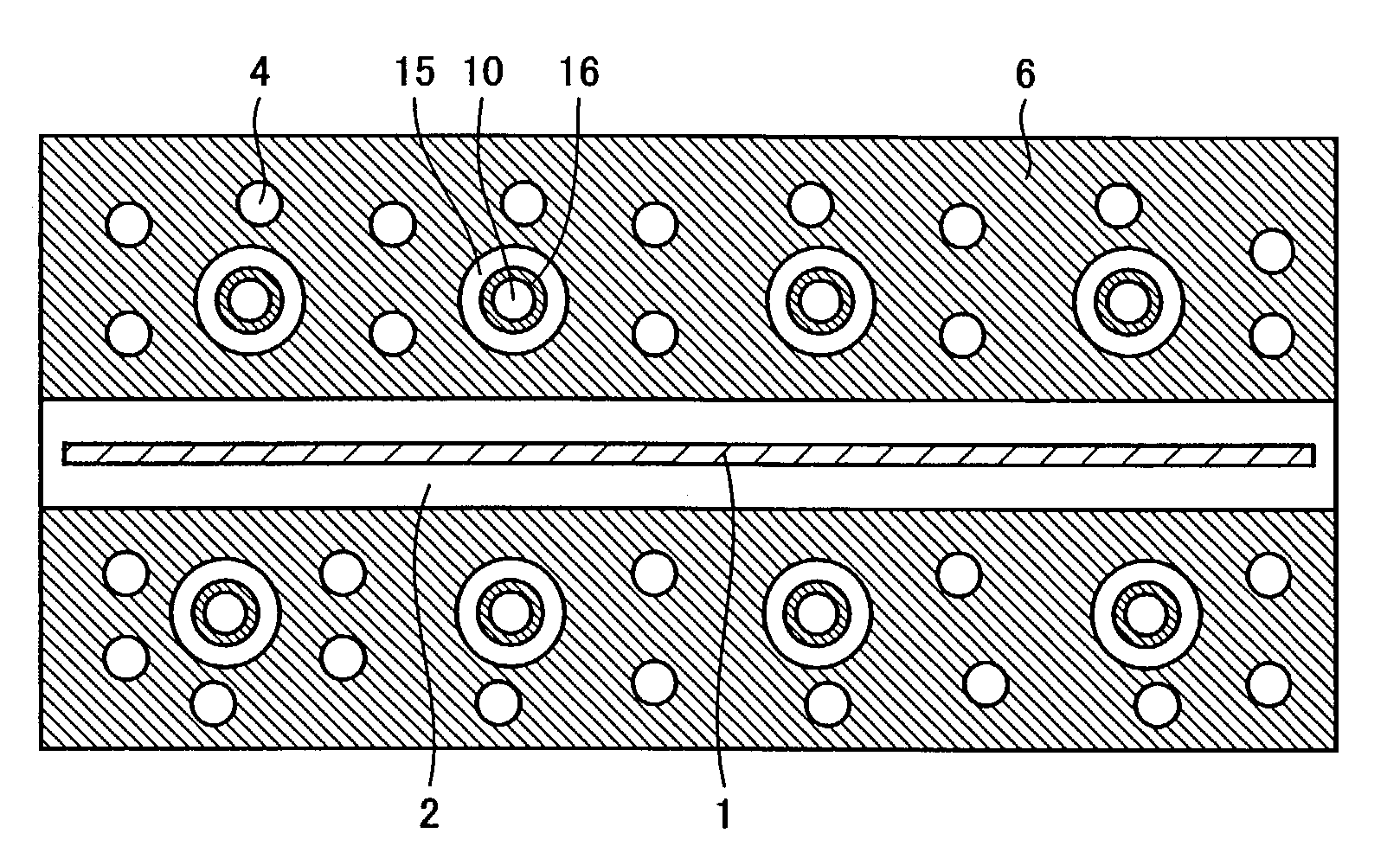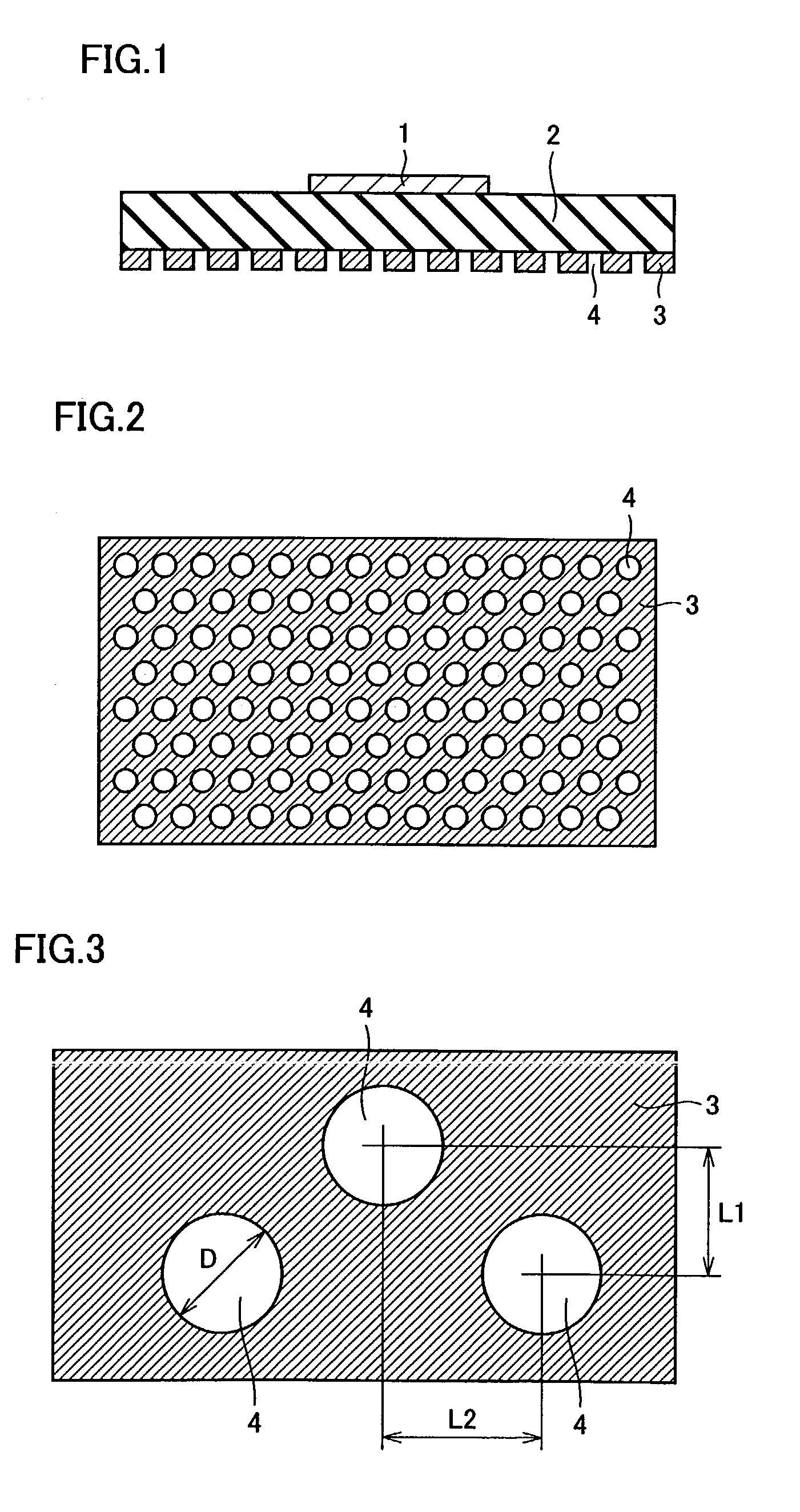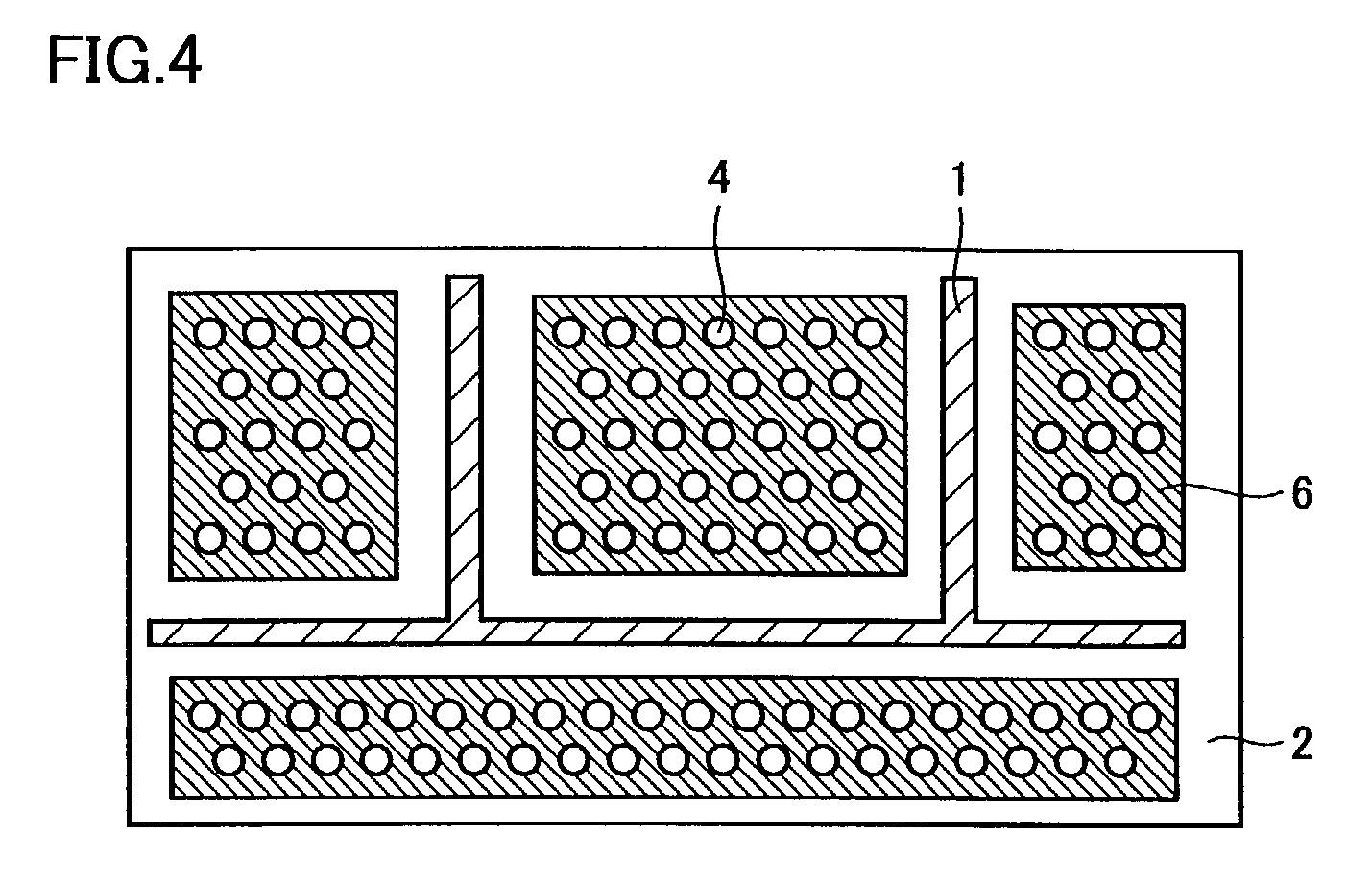Printed circuit board, radio wave receiving converter, and antenna device
a technology of radio wave receiving converter and printed circuit board, which is applied in the direction of printed element electric connection formation, high frequency circuit adaptation, waveguide, etc., can solve the problems of serious quality problems, affecting the performance and quality of the circuit board, and falling off or misalignment of components, so as to prevent the degradation of the performance of a product, reduce the bowing of the printed circuit board, and restrict the effect of loss
- Summary
- Abstract
- Description
- Claims
- Application Information
AI Technical Summary
Benefits of technology
Problems solved by technology
Method used
Image
Examples
first embodiment
[0047]FIG. 1 schematically shows the microstrip line portion of the printed circuit board according to the first embodiment. FIG. 2 shows the rear surface of the printed circuit board shown in FIG. 1.
[0048]As shown in FIGS. 1 and 2, the printed circuit board includes a substrate (base material) 2 of a dielectric material (insulator), a strip line (first conductive pattern) 1 as a transmission line formed on a front surface of substrate 2, and a ground metal layer (ground pattern) 3 formed to cover an entire rear surface of substrate 2.
[0049]Substrate 2 is formed of glass fiber and polytetrafluoroethylene, for example. Strip line 1 and ground metal layer 3 are formed, e.g., of copper. The copper surfaces may be coated with gold plating, solder plating, organic resin or the like to prevent corrosion.
[0050]A plurality of openings 4 are provided in ground metal layer 3. In the example shown in FIGS. 1 and 2, openings 4 are formed over the entire rear surface of substrate 2 at approximat...
second embodiment
[0066]The second embodiment of the present invention is explained with reference to FIG. 4. FIG. 4 is a partial top plan view of the printed circuit board of the second embodiment.
[0067]As shown in FIG. 4, a ground pattern 6 may be provided on a microstrip line surface of substrate 2 on which a strip line 1 is formed, and openings 4 may be provided in the relevant ground pattern 6. In this case, again, the residual copper ratio can be adjusted, and thus, the bowing of the circuit board can be reduced. The shape and designing method of opening 4 are as in the first embodiment.
third embodiment
[0068]The third embodiment of the present invention is explained with reference to FIG. 7. FIG. 7 is a partial cross sectional view of the printed circuit board of the third embodiment. In the third embodiment, the present invention is applied to a printed circuit board having laminated substrates.
[0069]As shown in FIG. 7, the printed circuit board has substrates 7, 9 formed of different materials, an intermediate layer 8 formed between substrates 7 and 9, and strip lines (transmission lines) 1 formed on surfaces of respective substrates 7, 9.
[0070]Substrate 7 is formed, e.g., of FR-4, and substrate 9 is formed, e.g., of polytetrafluoroethylene. Intermediate layer 8 is formed of a metal layer such as copper.
[0071]In the third embodiment, via holes 5 reaching respective substrates 7, 9 are formed in intermediate layer 8. Provision of such via holes 5 restricts occurrence of internal stress due to the difference in thermal expansion coefficient of the different materials during the he...
PUM
 Login to View More
Login to View More Abstract
Description
Claims
Application Information
 Login to View More
Login to View More - R&D
- Intellectual Property
- Life Sciences
- Materials
- Tech Scout
- Unparalleled Data Quality
- Higher Quality Content
- 60% Fewer Hallucinations
Browse by: Latest US Patents, China's latest patents, Technical Efficacy Thesaurus, Application Domain, Technology Topic, Popular Technical Reports.
© 2025 PatSnap. All rights reserved.Legal|Privacy policy|Modern Slavery Act Transparency Statement|Sitemap|About US| Contact US: help@patsnap.com



